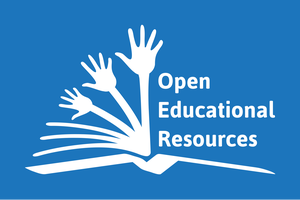
Open Educational Resources, as defined by the Hewlett Foundation, are teaching, learning, and research resources that reside in the public domain or have been released under an intellectual property license that permits their free use and repurposing by others.
Students can access OERs for zero cost, download and keep a digital copy, and print or purchase a low-cost hardcopy. Educators can curate, tailor, and share OERs to perfectly suit their curriculum and share their innovations freely. Authors can disseminate their work to a worldwide audience while still receiving attribution. Creative Commons Licensing facilitates flexibility in usage of OER. David Wiley created a framework (5Rs) that allows authors to retain copyright while encouraging/allowing reuse, revision, remixing, or redistribution.
There is significant financial benefit to students and university. According to the US Bureau of Labor Statistics (BLS), from January 2006 to July 2016 the Consumer Price Index for college tuition and fees increased 63 percent, compared with an increase of 21 percent for all items. Over that period, consumer prices for college textbooks increased 88 percent. The US Public Interest Research Group (PIRG) reported that students spend average of about $1200 annual for textbooks, about 65% of students said that they had decided against buying a textbook because it was too expensive, and 48% of students said that the cost of textbooks impacted how many/which classes they took each semester. Research shows open textbooks, compared to traditional texts, have equal or better student performance/learning outcomes and equal or improved student retention rates/graduation rates.
An Open Ed Group summary of 25 studies focused on efficacy, perceptions, or both efficacy and perception stated that “a general finding seems to be that roughly half of teachers and students find OER to be comparable to traditional resources, a sizeable minority believe they are superior, and a smaller minority find them inferior.” Studies conducted at Virginia State University (Business) and Houston Community College (Psychology) found that students who used open textbooks tended to have higher grades and lower withdrawal rates than their peers who used traditional textbooks
Open textbook collections have peer reviewed text books freely available for use in a class. The University of Minnesota Open Textbook Library has over 300 open texts. OpenStax, a non-profit publisher of open textbooks, offers a collection of about 30 online texts with option to acquire print copies at low cost. These are customizable to institutional preferences in collaboration with OpenStax. Over 840 institutions worldwide are using OpenStax.
For more information, visit the WCSU Libraries’ Open Education Resources Guide or contact your WCSU librarian.
UNESCO Image used under Creative Commons License